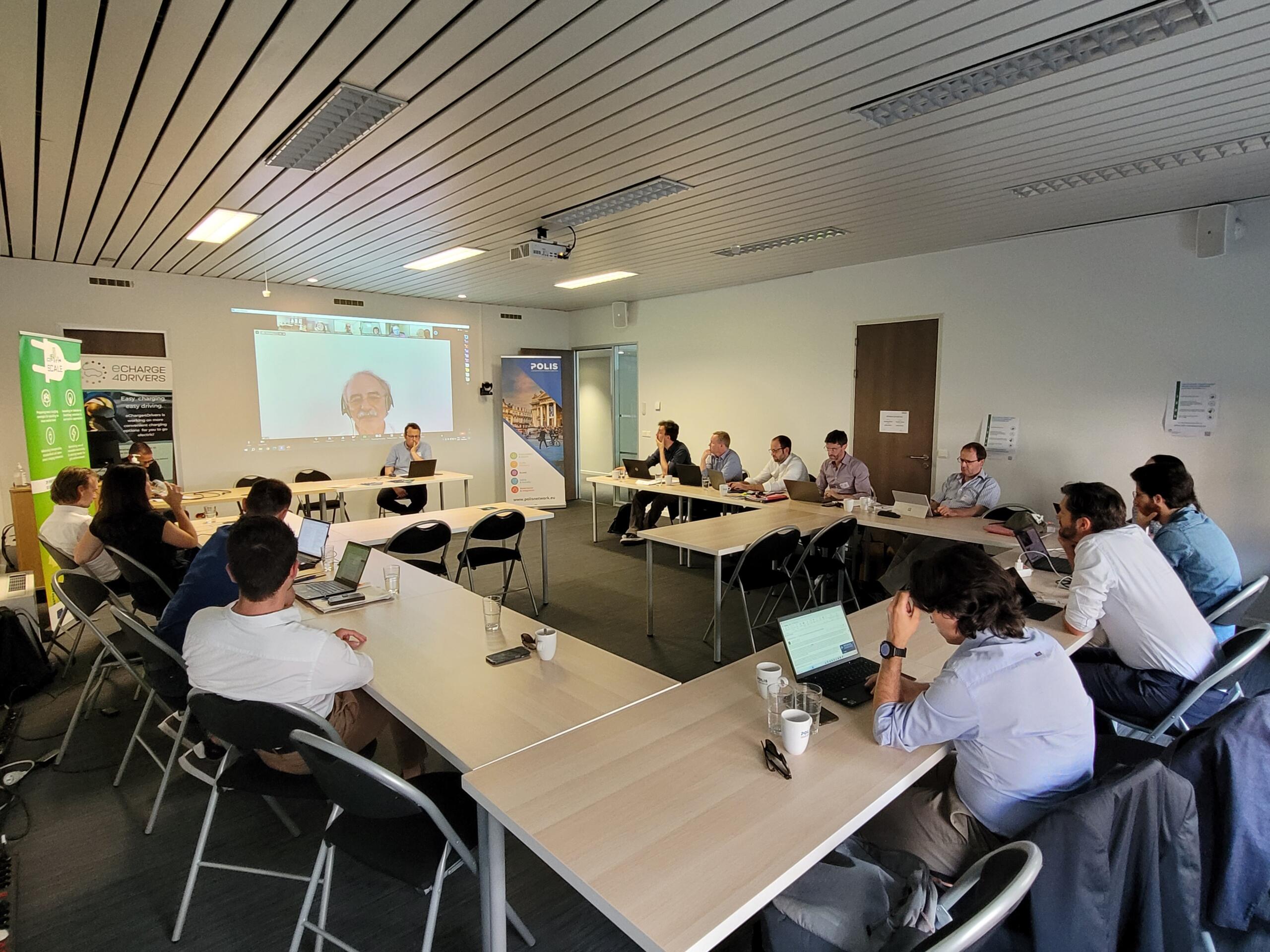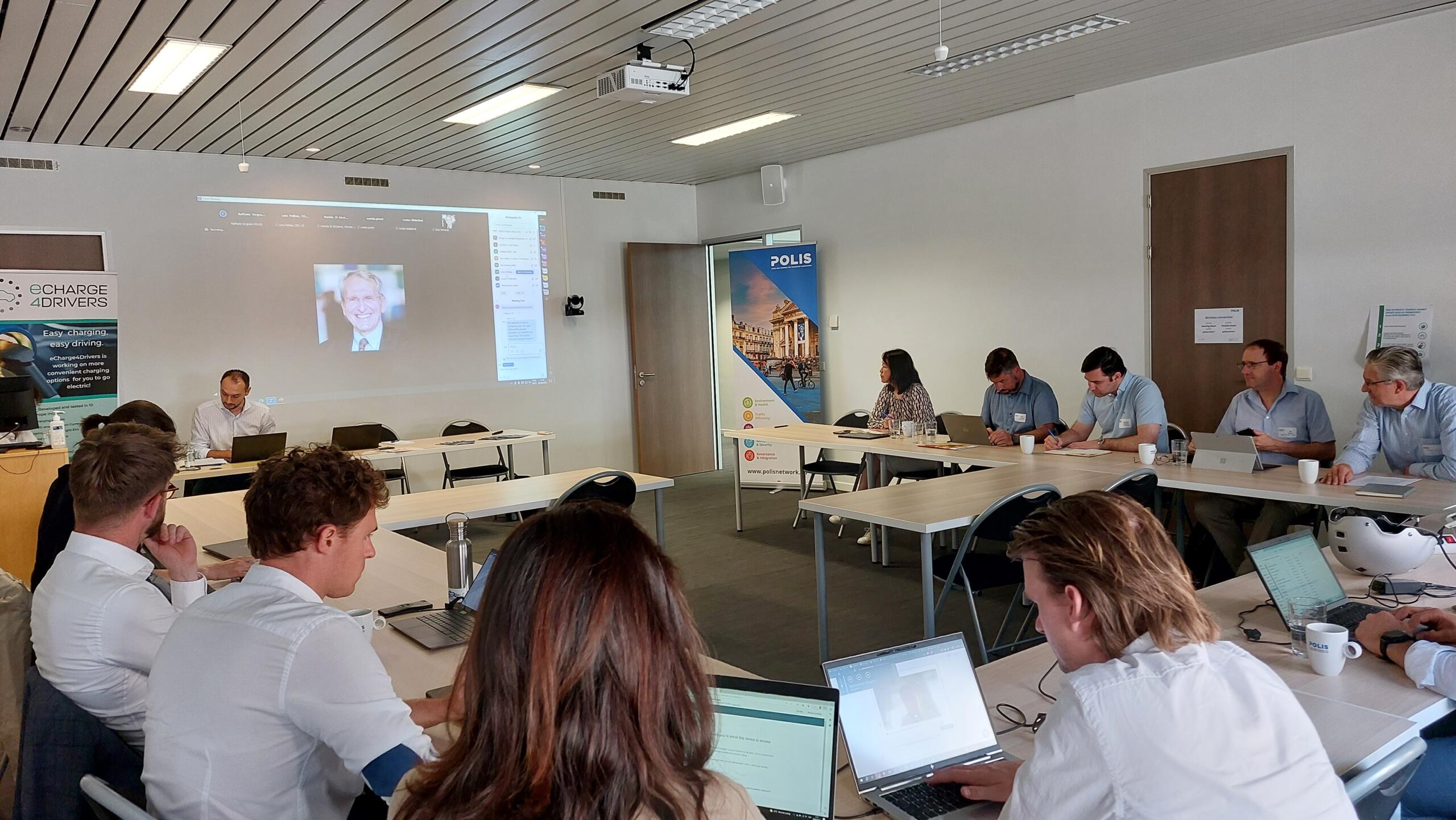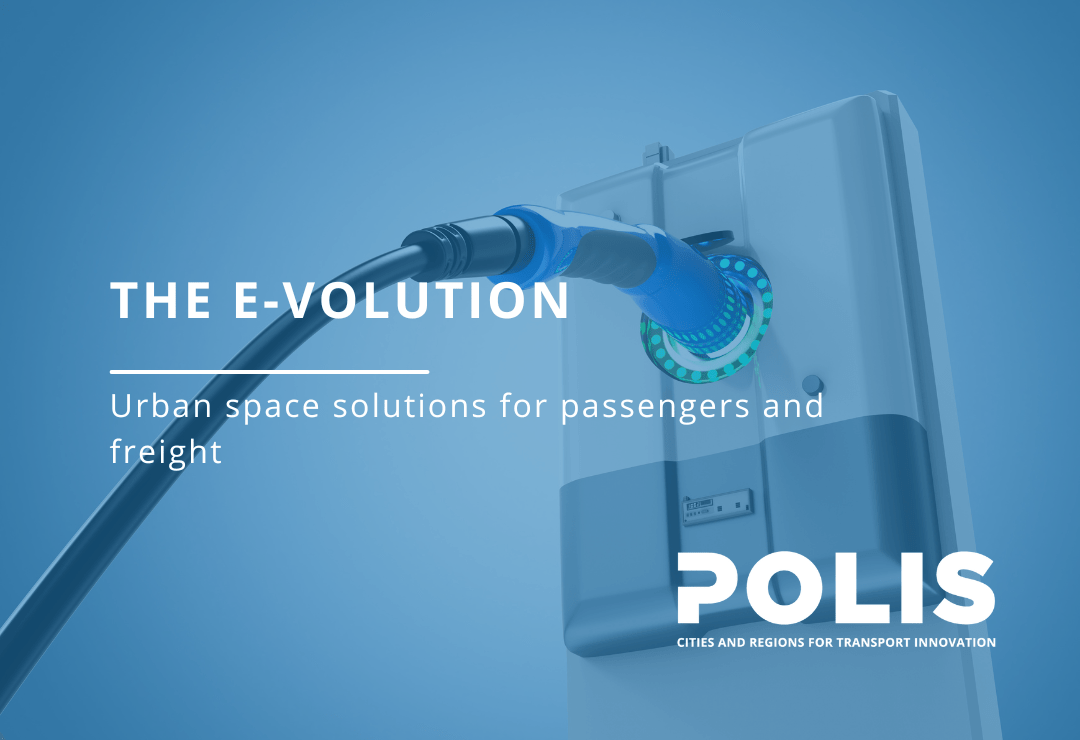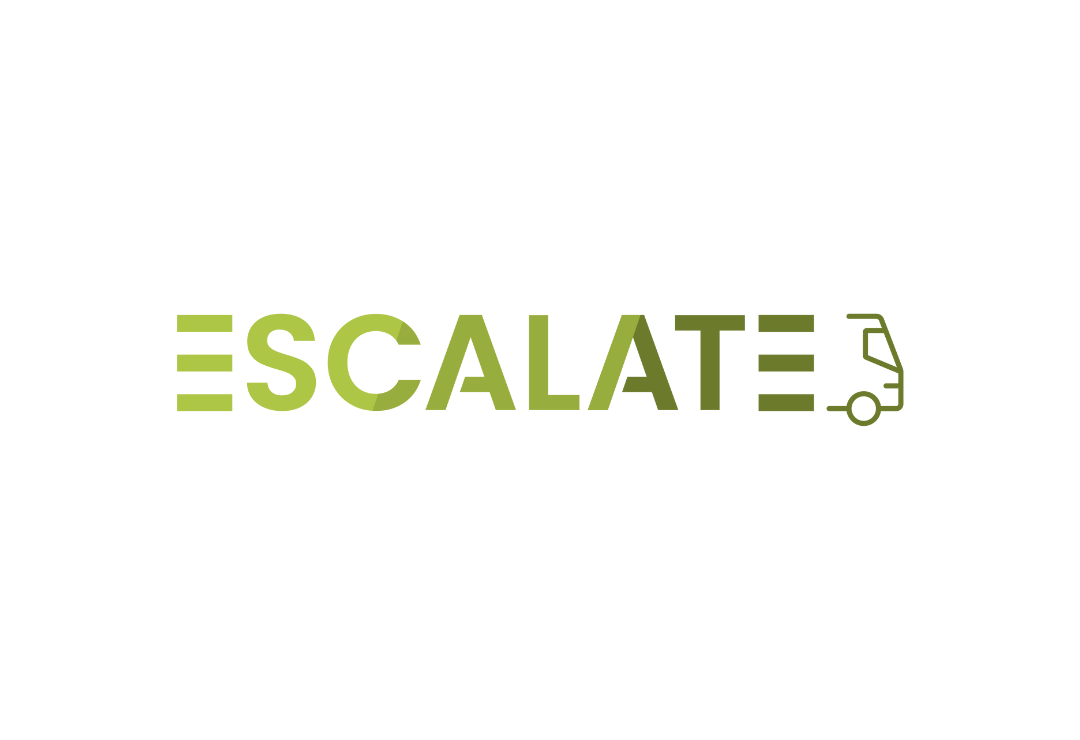rEVolutionising passenger and freight transport: POLIS‘ working groups & projects explore
POLIS’ Parking, Air Quality & Clean Vehicles, and Freight working groups convened for a two-day event traversing the future of electromobility… and what is in store for the future of passenger and logistics transportation.
Electrification is rapidly transforming the urban mobility landscape. New vehicles and the infrastructure required to support them are prompting radical changes in parking and access regulations, with impacts across passenger and freight transport for cities, regions, operators and industry.
While electrification brings promising and exciting opportunities for urban mobility, and will be critical to achieving climate neutrality targets. However, there are many challenges ahead for policy makers, practitioners and their private sector partners, as they seek to establish the regulatory environment needed to support innovation, while ensuring the social, economic and environmental needs of cities- and their citizens- remains at the forefront.
To dive in POLIS’ Parking, Air Quality & Clean Vehicles, and Freight working groups united for a comprehensive discussion on parking policy and electrification of heavy-duty vehicles.
Watch the event recordings here: Day 1: EV Parking & Day 2: Electrification of heavy-duty vehicles
Day 1 - Issues and innovations in EV parking

Survey of battery-electric vehicle users
The demographic of EV users has not changed significantly since the surge in sales of battery-electric vehicles (BEVs) in the last five years. According to a European Alternative Fuel Observatory (EAFO) study, which was conducted among 18.000 consumers last year, most users are middle-aged males with a medium to high income, who live in a detached house. In order to boost BEV uptake in urban environments to decarbonise inner cities, cities need to consider investments into infrastructure to encourage urban inhabitants to invest in BEVs. VUB presented additional main takeaways from the survey, highlighting that low charging speeds, inconvenient payment methods and unclear signage are the three main challenges related to public (on-street) charging.
POLIS president Leuven showcases solutions
Cities across Europe, including the Belgian city of Leuven, have targets for on- and off-street charging and parking infrastructure. The main aspect of the Flemish city, and president of POLIS Network, is to reallocate space to discourage car use, while encouraging EV uptake with the goal to install 3100 publicly accessible charging points by 2025. Prioritised locations for fast charging are intermodal points that are well-connected, whereas the disruption of (residential) neighbourhoods should be kept at a minimum.
New EU regulations
Besides the individual targets, cities soon need to apply to the new European regulation for the deployment of alternative fuels infrastructure (AFIR), which was presented to the workshop audience by DG Move and POLIS Network. This new regulation will enshrine national fleet-based targets for light-duty vehicles and distance-based targets for heavy-duty vehicles. Rules for charging infrastructure and related pricing models are also included. Additionally, task forces to gather best practice solutions for BEV charging infrastructure are established.
Panel debate summarises parking challenges
The first day was concluded with a panel debate about parking and charging infrastructure between cities, representatives of the parking industry and European projects, as well as academics. Goodmovs and the European Parking Association (EPA) pointed out that cities should embrace digital technology to provide information about charging station occupancy to users, as well as bidirectional charging solutions, which will have a significant impact on the electric grid. On behalf of the echarge4drivers, project partner VUB highlighted the opportunities of a bidirectional charging system, but pointed out that such technological implementation incentivises long-term charging on public chargers, which can increase search traffic.
Day 2 - Electrification of heavy-duty vehicles

Several EU-funded projects provide vehicle- and charging solutions to decarbonise (urban) freight deliveries. The event heard key learnings from these and insights into electric road systems and logistics solutions from Sweden. The segment of presentations was followed by a panel discussion that allowed industry partners, vehicle manufacturers and technical experts to discuss the implications of new zero-emission HGVs for the road transport industry.
A representative from the Lindholmen Science Park presented the research as part of the E-Charge and REEL projects, which included the results from 70 logistics solutions in urban environments across Sweden. The main takeaways are that logistics companies prefer to use own charging facilities and that the total cost of ownership significantly varies in Sweden, depending on the location of the freight operator, as energy is cheaper in Northern Sweden.
Challenges posed by depot locations were also highlighted, as grid infrastructure is an increasingly important topic in selecting areas for shipment centres. Furthermore, a case for electric road systems (ERS) as tests show that ERS permits smaller batteries, earlier TCO parity and earlier electrification at lower costs. ERS also reduces the demand for static charging at rest stops. Thus, simulations that calculate supply and demand between defined cargo hubs need to assess the feasibility of investing into an electric road system versus electric trucks and static charging stations.
NextETRUCK & ESCALATE: testing new electric HGV solutions
The two electric truck projects of NextETRUCK and ESCALATE aim to test long- and medium-haul zero-emission freight solutions for urban and regional transport. Whereas NextETRUCK focuses on medium-sized trucks that will be tested in Istanbul, Barcelona and Utrecht, ESCALATE will test long-distance freight solutions of 500 to 800 kilometres with cross-border elements.
NextETRUCK will test several new components, which are custom-made by OEMs for the tests, which include electric powertrains and smart charging solutions, as well as supporting software. The solutions will be tested on electric trucks that operate between two plants of an Istanbul OEM, in Barcelonas waste trucks and for goods delivery in Utrecht between satellite sites and urban distribution centres for last-mile delivery.
ESCALATE, which was presented by the Aristotle University of Thessaloniki, will demonstrate effective standardised modular electric multi-powertrains in real-life conditions, with the difference being in scale, as ESCALATE will test daily operation of HDVs under full load for distances over 500 km, in a period of 6 months in six pilot sites, including some refrigerator vehicles. Whereas NextETRUCK will solely focus on BEV solutions, ESCALATE will test hydrogen fuel cells and battery-powered solutions.
Roundtable discussion on urban freight electrification challenges
As a round-up of the two-day event a roundtable was organised that allowed freight industry experts and practitioners to provide recommendations for cities to support zero-emission freight. The International Road Transport Union (IRU) suggested an investment in a mix of last-mile deliveries and consolidation centres in urban environments that provide charging opportunities. Furthermore, IRU highlighted that the transition from commercial freight ICEs to BEVs require significant financial efforts and time.
The Alliance for Logistics Innovation (ALICE) calls for more cooperation between cities and the (urban) freight sector, as is currently done in Antwerp with a collaborative logistic initiative (CULT), a private initiative that paves the way to bridging the gap between charging and the providers’ needs. Another suggestion to reduce the environmental impact of urban logistic centres is to integrate renewable energy production directly at the logistic sites.
GEODIS highlighted the business aspects of (urban-) freight and stated that purchases of electric vehicles are very difficult due to a significant gap between the demand and supply of electric trucks, as a mere 2000 electric trucks are currently registered in Europe. Low-emission solutions, such as bio fuels that are currently used in France, are a very mediocre and temporary solution.
EINRIDE, as the operator with the largest e-truck fleet in Europe and North America with more than 500 ZE HDVs, stated that low- or zero-emission zones are a great way to regulate and decarbonise urban freight, which is only possible if freight companies receive subsidies for further zero-emission vehicle purchases. Further focus should be made concerning charging stations, as these are currently the bottleneck and require a rethinking in terms of location and deployment of solutions.
Another aspect was mentioned by the regulatory assistance project (RAP), which emphasised the need for a mapping exercise of public and semi-public charging stations and an assessment of the grid capacity.
Further reading:
- REEL: Regional Electrified Logistics
- RISE shares report on how innovation can support the uptake of electric trucks - POLIS Network
- Interaction Effects between Battery Electric Trucks, Electric Road Systems and Static Charging Infrastructure
- Mapping of legislation/guidelines/codes relating to fire safety for recharging infrastructure and electric vehicles (EU Survey)
- Introduction to the EAFO European consumer monitor & survey
- Trends in electric heavy-duty vehicles
- Electrifying last-mile delivery: A total cost of ownership comparison of battery-electric and diesel trucks in Europe
- Guide for advancing towards zero-emission urban logistics by 2030
- EPA Report on EV charging




